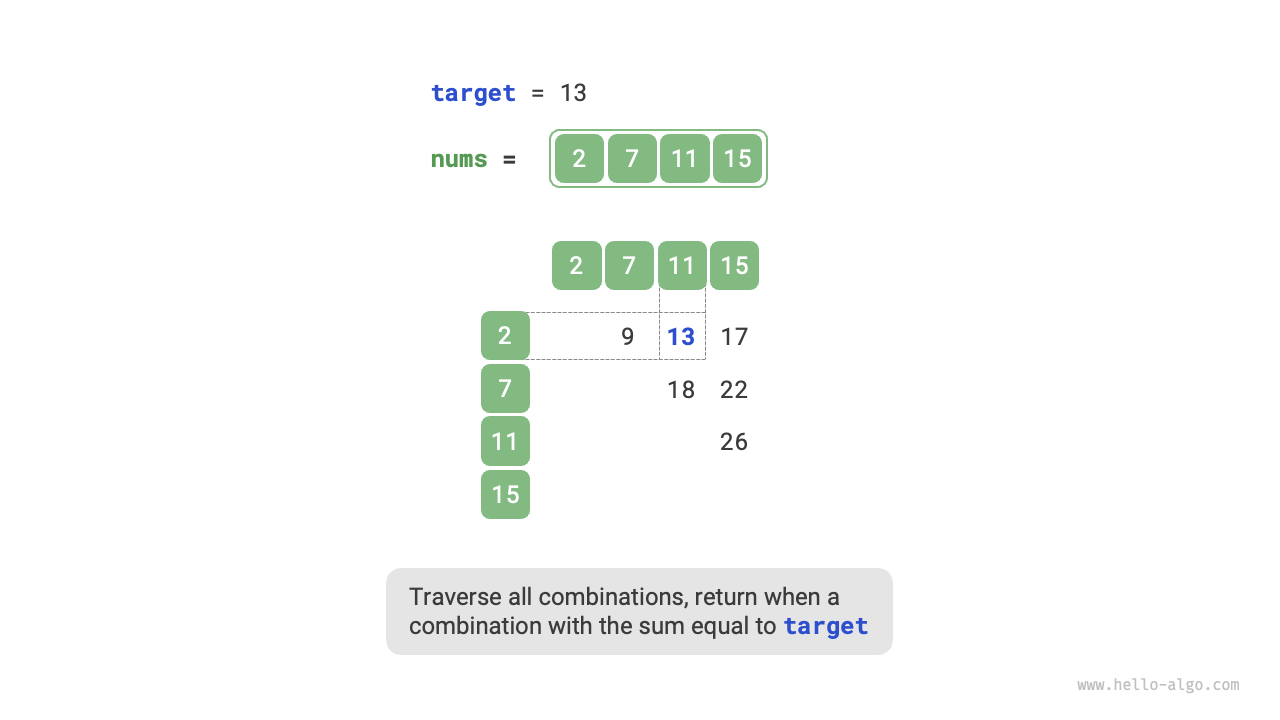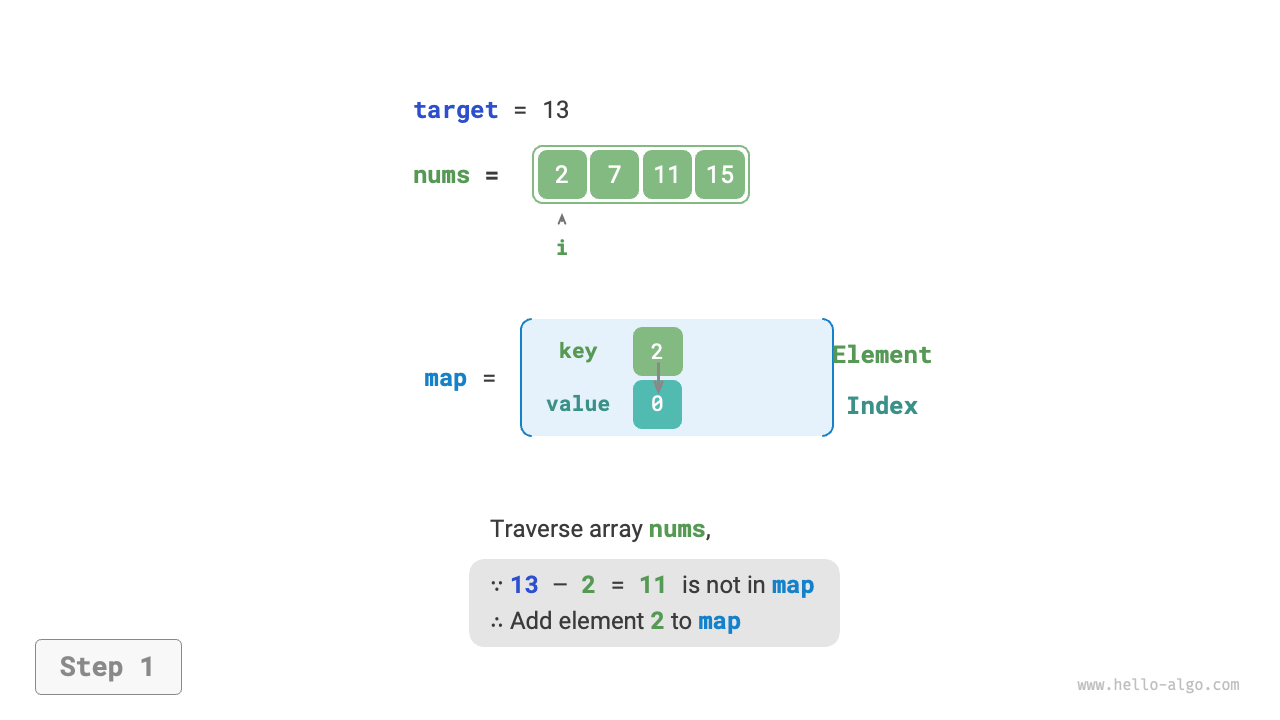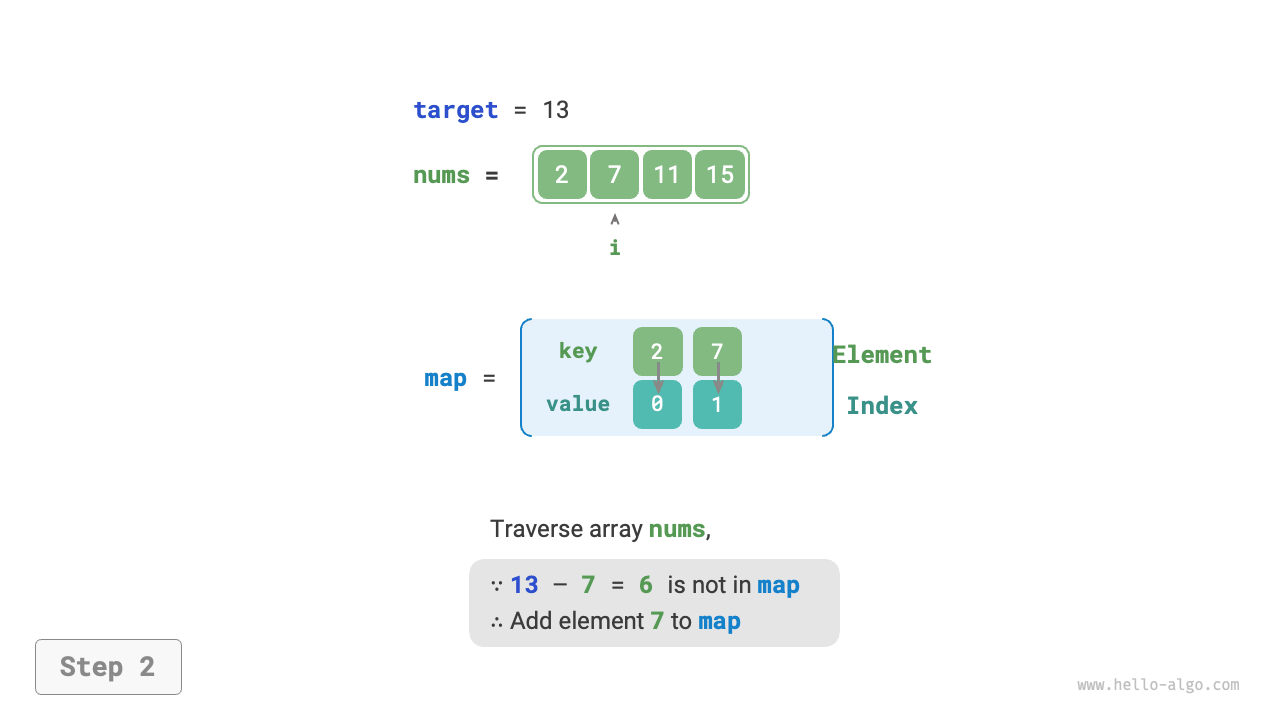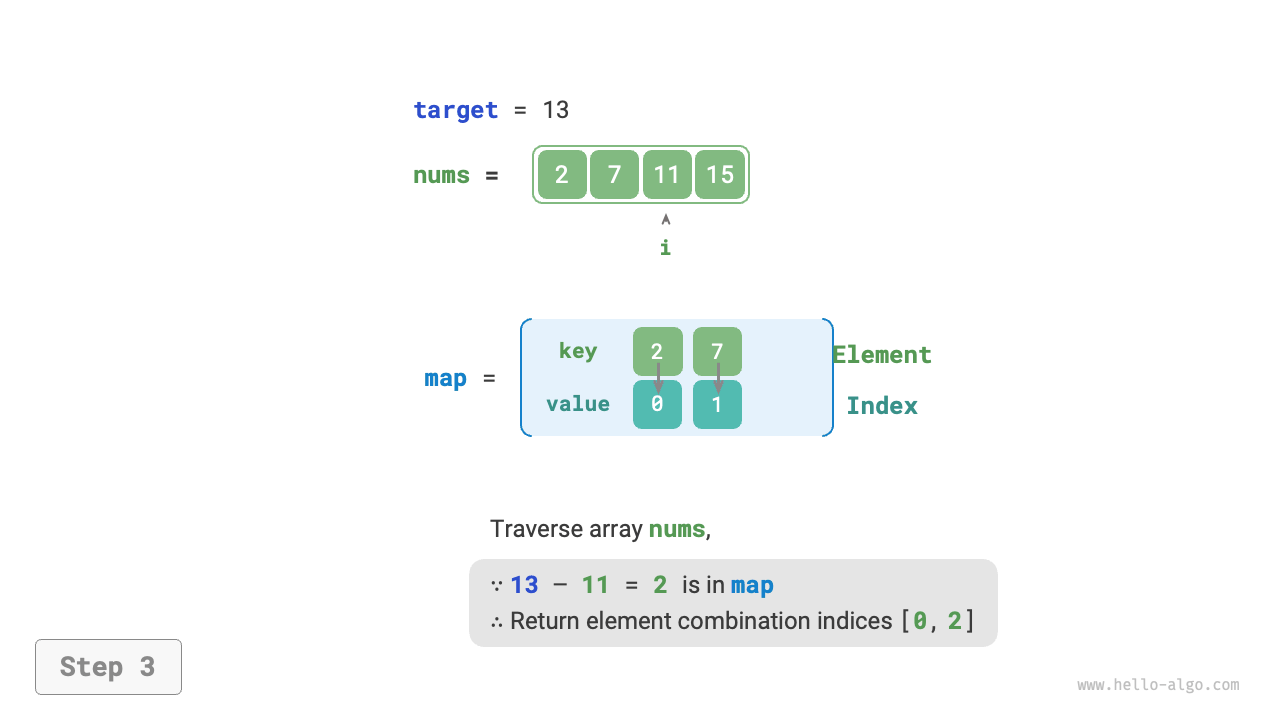10.4 Hash optimization strategies¶
In algorithm problems, we often reduce the time complexity of an algorithm by replacing a linear search with a hash-based search. Let's use an algorithm problem to deepen the understanding.
Question
Given an integer array nums and a target element target, please search for two elements in the array whose "sum" equals target, and return their array indices. Any solution is acceptable.
10.4.1 Linear search: trading time for space¶
Consider traversing through all possible combinations directly. As shown in Figure 10-9, we initiate a nested loop, and in each iteration, we determine whether the sum of the two integers equals target. If so, we return their indices.
Figure 10-9 Linear search solution for two-sum problem
The code is shown below:
/* Method one: Brute force enumeration */
vector<int> twoSumBruteForce(vector<int> &nums, int target) {
int size = nums.size();
// Two-layer loop, time complexity is O(n^2)
for (int i = 0; i < size - 1; i++) {
for (int j = i + 1; j < size; j++) {
if (nums[i] + nums[j] == target)
return {i, j};
}
}
return {};
}
/* Method one: Brute force enumeration */
int[] twoSumBruteForce(int[] nums, int target) {
int size = nums.length;
// Two-layer loop, time complexity is O(n^2)
for (int i = 0; i < size - 1; i++) {
for (int j = i + 1; j < size; j++) {
if (nums[i] + nums[j] == target)
return new int[] { i, j };
}
}
return new int[0];
}
This method has a time complexity of \(O(n^2)\) and a space complexity of \(O(1)\), which can be very time-consuming with large data volumes.
10.4.2 Hash search: trading space for time¶
Consider using a hash table, where the key-value pairs are the array elements and their indices, respectively. Loop through the array, performing the steps shown in Figure 10-10 during each iteration.
- Check if the number
target - nums[i]is in the hash table. If so, directly return the indices of these two elements. - Add the key-value pair
nums[i]and indexito the hash table.
Figure 10-10 Help hash table solve two-sum
The implementation code is shown below, requiring only a single loop:
def two_sum_hash_table(nums: list[int], target: int) -> list[int]:
"""Method two: Auxiliary hash table"""
# Auxiliary hash table, space complexity is O(n)
dic = {}
# Single-layer loop, time complexity is O(n)
for i in range(len(nums)):
if target - nums[i] in dic:
return [dic[target - nums[i]], i]
dic[nums[i]] = i
return []
/* Method two: Auxiliary hash table */
vector<int> twoSumHashTable(vector<int> &nums, int target) {
int size = nums.size();
// Auxiliary hash table, space complexity is O(n)
unordered_map<int, int> dic;
// Single-layer loop, time complexity is O(n)
for (int i = 0; i < size; i++) {
if (dic.find(target - nums[i]) != dic.end()) {
return {dic[target - nums[i]], i};
}
dic.emplace(nums[i], i);
}
return {};
}
/* Method two: Auxiliary hash table */
int[] twoSumHashTable(int[] nums, int target) {
int size = nums.length;
// Auxiliary hash table, space complexity is O(n)
Map<Integer, Integer> dic = new HashMap<>();
// Single-layer loop, time complexity is O(n)
for (int i = 0; i < size; i++) {
if (dic.containsKey(target - nums[i])) {
return new int[] { dic.get(target - nums[i]), i };
}
dic.put(nums[i], i);
}
return new int[0];
}
This method reduces the time complexity from \(O(n^2)\) to \(O(n)\) by using hash search, significantly enhancing runtime efficiency.
As it requires maintaining an additional hash table, the space complexity is \(O(n)\). Nevertheless, this method has a more balanced time-space efficiency overall, making it the optimal solution for this problem.



